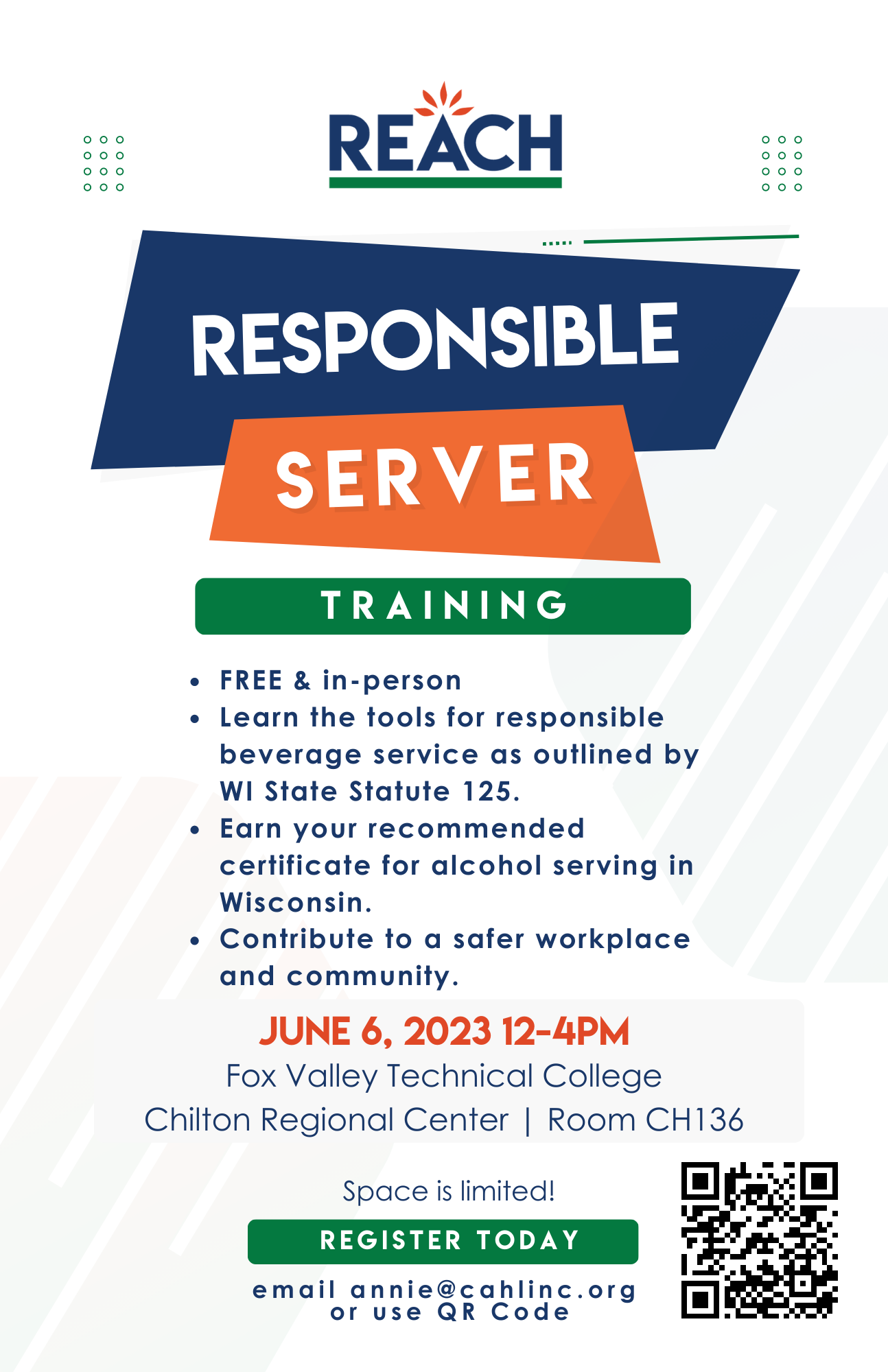|
Back to Success Stories
Responsible Server Training
Hosted by:
REACH

Please briefly describe your Communities Talk activity.
With Calumet County’s 2023 Behavioral Risk Factor Surveillance System’s (BRFSS) notorious ranking (see below), REACH, a group focused on reducing alcohol, among other things, wanted to address this challenge. So, they hosted a certified responsible beverage server course focusing on standardized pouring sizes.
Open to all alcohol operators, bartenders, and servers in Calumet County, the course itself focused on teaching the tools for responsible beverage service as outlined by Wisconsin State Statute 125 in order to contribute to a safer workplace and community.
In addition to completing the course curriculum, the individuals participated in a robust discussion regarding not serving minors, reducing overserving, identifying activities to conduct during “last call for alcohol” announcements, and developing a safe and positive culture within their establishments. After the training, each attendee was awarded a certificate for Responsible Beverage Serving in Wisconsin.
To draw more interest in the event, not only was it published through local social media, but with the local law enforcement as well. Additionally, invitations were sent directly to each licensed alcohol retailer in Calumet County to encourage attendance. One establishment was so appreciative of the training that they made it mandatory for all their servers.

How does alcohol and other drug misuse affect your community?

Calumet County, Wisconsin, notoriously ranks among the top “drunkest” counties in the United States. This is noted in many sources, including the Centers for Disease Control and Prevention’s BRFSS. In 2023 rankings, with excessive drinking data from the 2020 BRFSS, Calumet County ranks number one again. (The definition of excessive drinking for the county health rankings includes binge and heavy drinking.) In addition, national youth drinking rates are unfortunately increasing. REACH, Calumet County’s substance misuse prevention coalition, works to reduce youth alcohol consumption by addressing alcohol availability in our communities and working to change the social norms of excessive and binge drinking.

Which prevention strategy(ies), as defined by SAMHSA’s Center for Substance Abuse Prevention, best fit your Communities Talk activity?
- Environmental Strategy - focuses on establishing or changing community standards, codes, and attitudes thereby influencing incidence and prevalence of alcohol and other drug use within the community. The strategy depends on engaging a broad base of community partners, focuses on places and specific problems, and emphasizes public policy.

What goal(s) did you hope to accomplish with your Communities Talk activity?
- Hold meetings or discussion groups on alcohol and/or other drug misuse prevention.
- Encourage responsible beverage server training.
- Prevent sales of other drugs at public events where youth are present.

Did you accomplish your goal(s)?
Yes

What challenge(s) did you face in planning your activity this year?
- Needed additional resources to conduct activity
- Lack of interest from the community
- Particularly severe or resistant substance use issues in our community

How did you overcome these challenges?
In order to draw more interest in our event, it was published through local social media and with our law enforcement contacts as well. Invitations were sent directly to each licensed alcohol retailer in Calumet County to encourage attendance.

What are your next steps?
- Host follow-up meetings or activities
- Support new prevention policies, legislation, or social ordinances

Organizations that conduct Communities Talk activities often involve other organizations in the planning and execution of events. Please indicate which type(s) of organizations you involved in your activity planning.

Which of the following best describes the primary audience(s) for your Communities Talk activity?
- Community members, policymakers, alcohol retailers

How did you reach and engage your primary audience(s) to encourage them to participate in your activity?
In order to draw more interest in our event, not only was it published through local social media, but with our law enforcement contacts as well. Additionally invites were sent directly to each licensed alcohol retailer in Calumet County encouraging attendance.

Which Communities Talk resources (or other SAMHSA resources) were most helpful for your activity?
- Communities Talk website
- Communities Talk planning guides
|
|